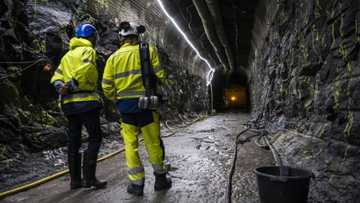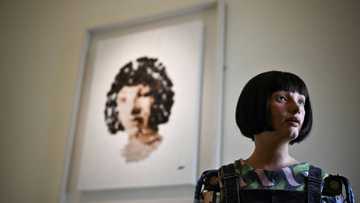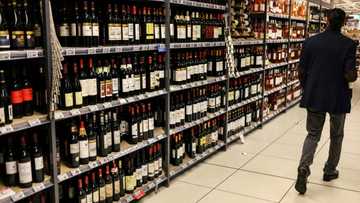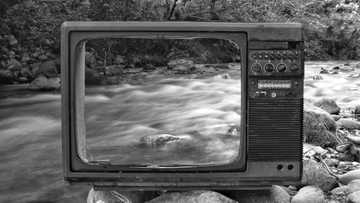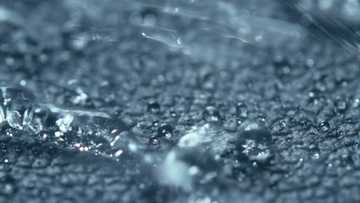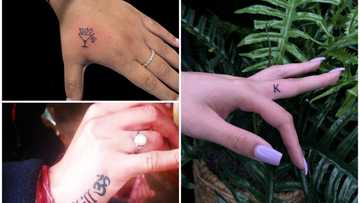25 most common laboratory equipment and their uses with pictures
Several types of equipment are required for any functional laboratory to operate appropriately. Be it a school, research, or a medical laboratory, special apparatus is needed. What are some of the common laboratory equipment names and their functions?
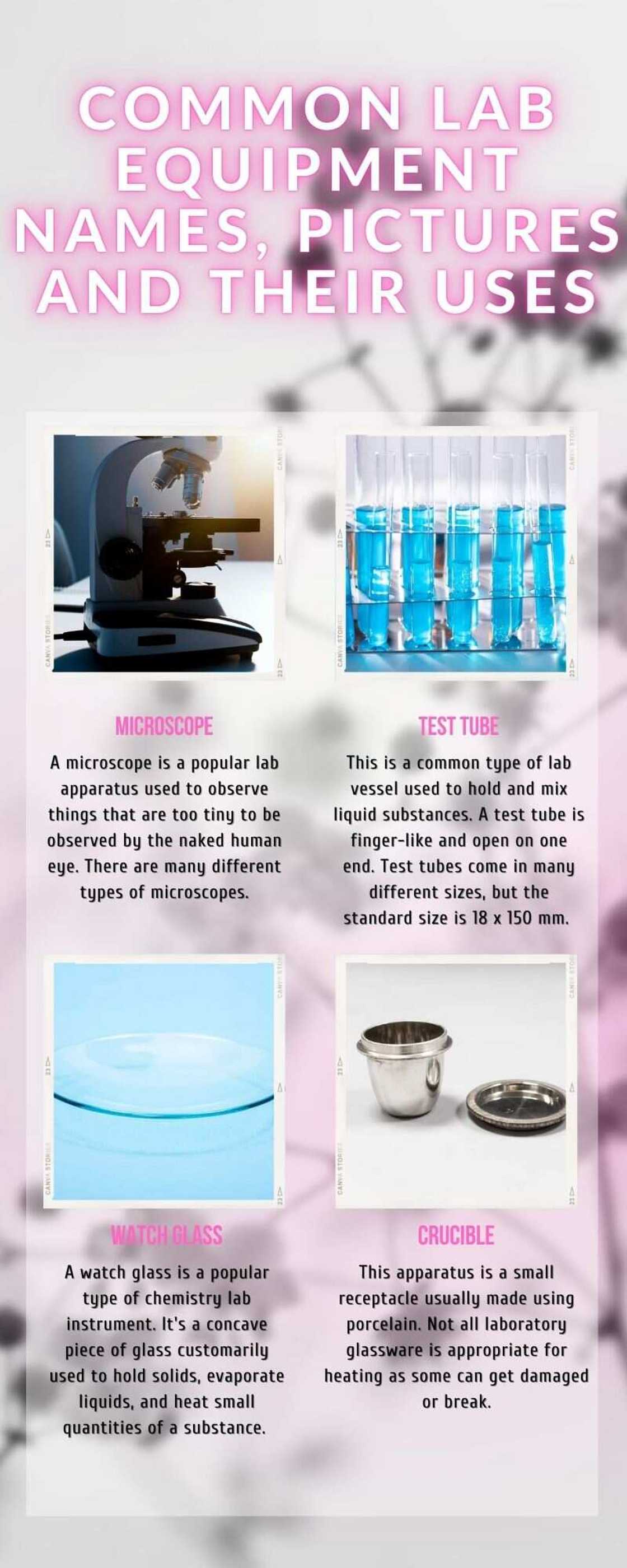
Source: UGC
Laboratory tools are used to carry out scientific experiments, and they range from simple to complex, depending on the uses. While different types of laboratories need different types of apparatus, some are common for all. Below are lab equipment names and pictures that are very common.
Laboratory equipment and their uses
Lab equipments refers to various gear used in a laboratory to perform different tasks. These tools are meant for use by scientists, pupils, teachers, and even medics. For example, some science lab apparatus are used for weighing objects, mixing and preparing solutions, and others for cleaning vessels.
While performing any experiment, you need to be careful to avoid getting hurt. To ensure safety and adequately carry out an experiment, it is essential to know the names of lab equipment and their uses.
What are the different types of apparatus used in a chemistry lab? Have a look at these common lab equipment names and images and their various functions/uses in the lab.
1. Microscope
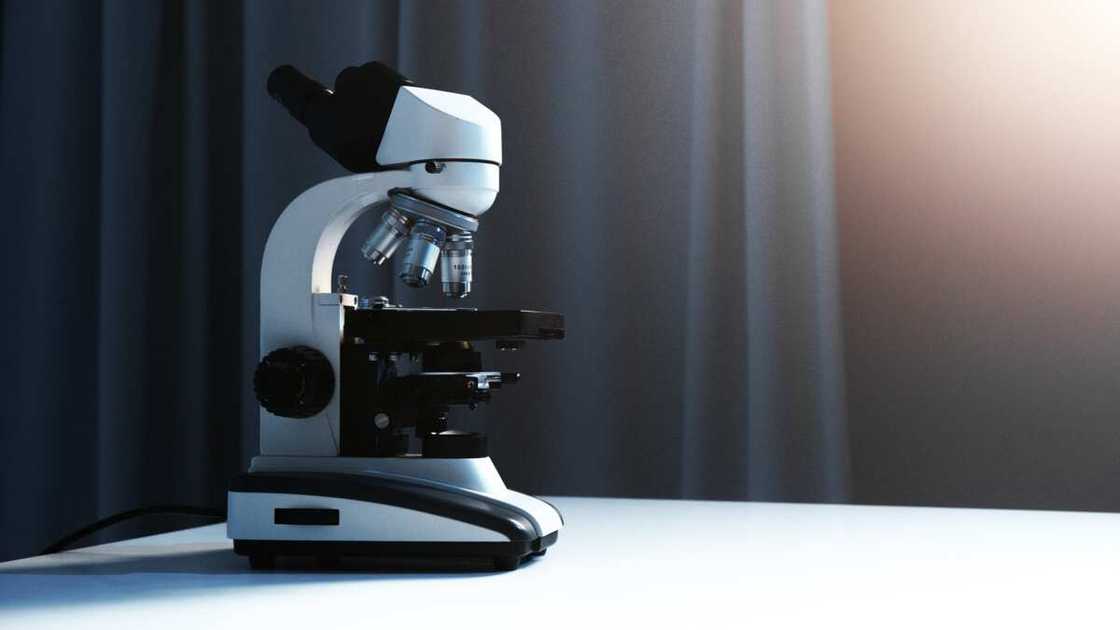
Source: UGC
A microscope is a popular science equipment used to observe things that are too tiny to be observed by the naked human eye. There are many different types of microscopes.
A light microscope uses lights and a series of magnifying lenses to observe a tiny specimen. On the other hand, an electron microscope uses a beam of electrons to form a magnified image and, thus, is more powerful.
2. Test tube
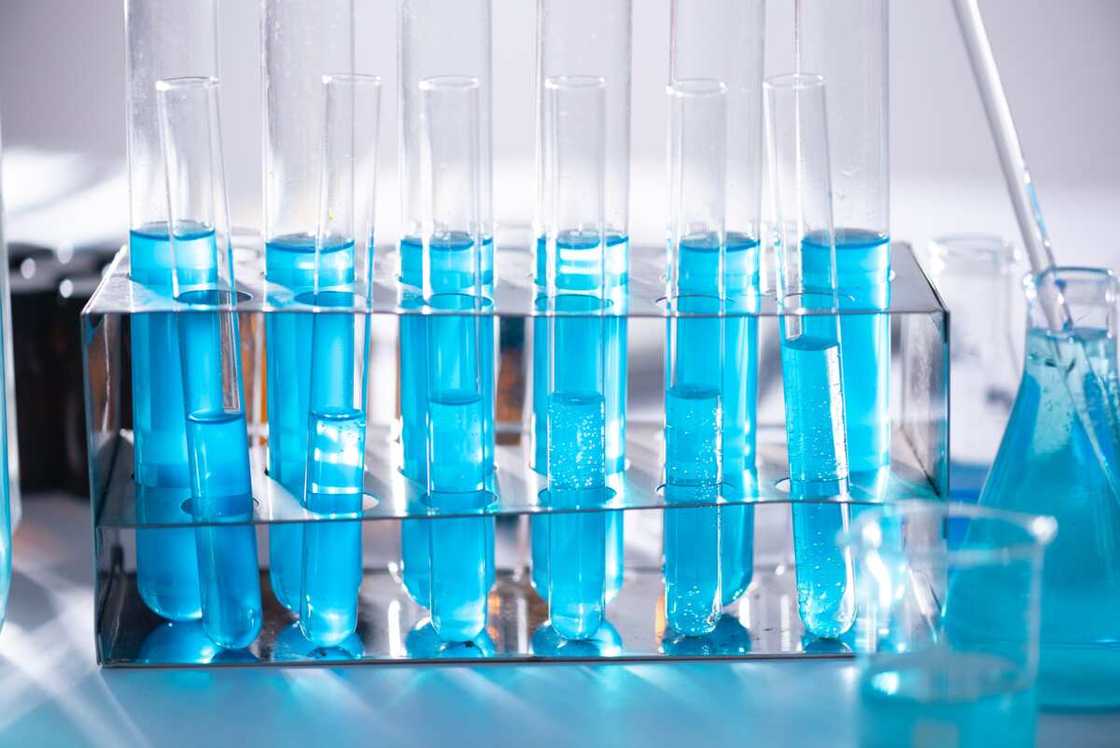
Source: UGC
This is a common type of lab vessel used to hold and mix liquid substances. A test tube is finger-like and open on one end. Test tubes come in many different sizes, but the standard size is 18 x 150 mm.
3. Watch glass
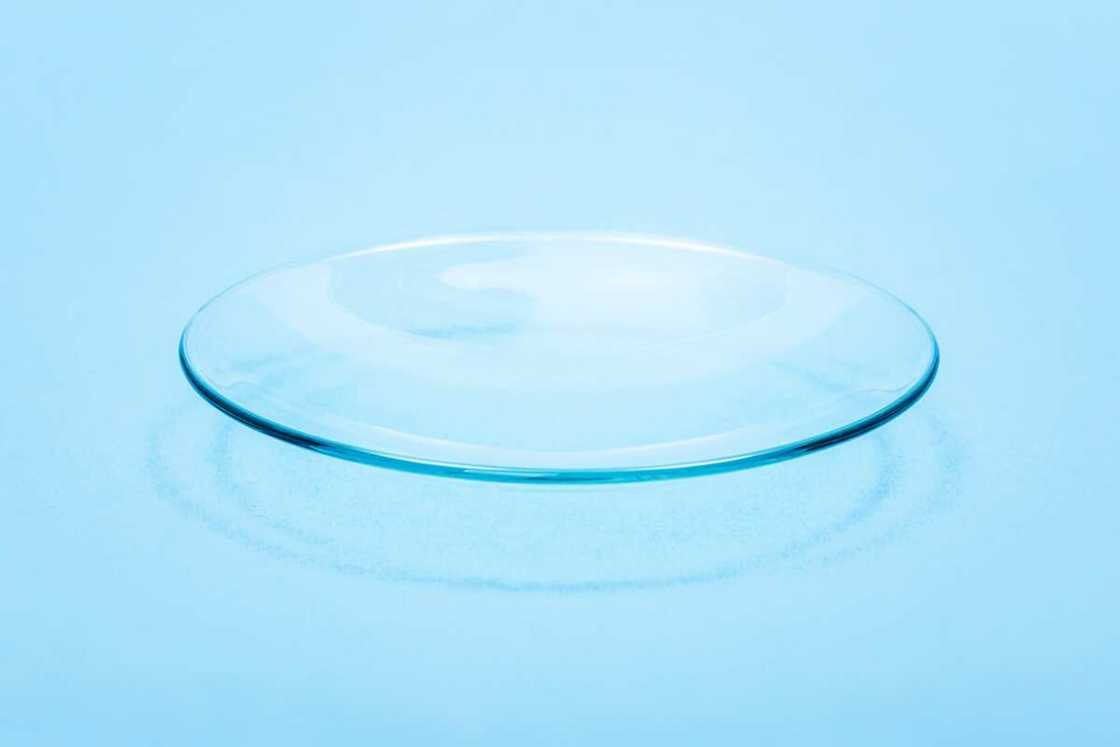
Source: Getty Images
A watch glass is one of the popular types of laboratory instruments. It's a concave piece of glass customarily used to hold solids, evaporate liquids, and heat small quantities of a substance.
4. Crucible
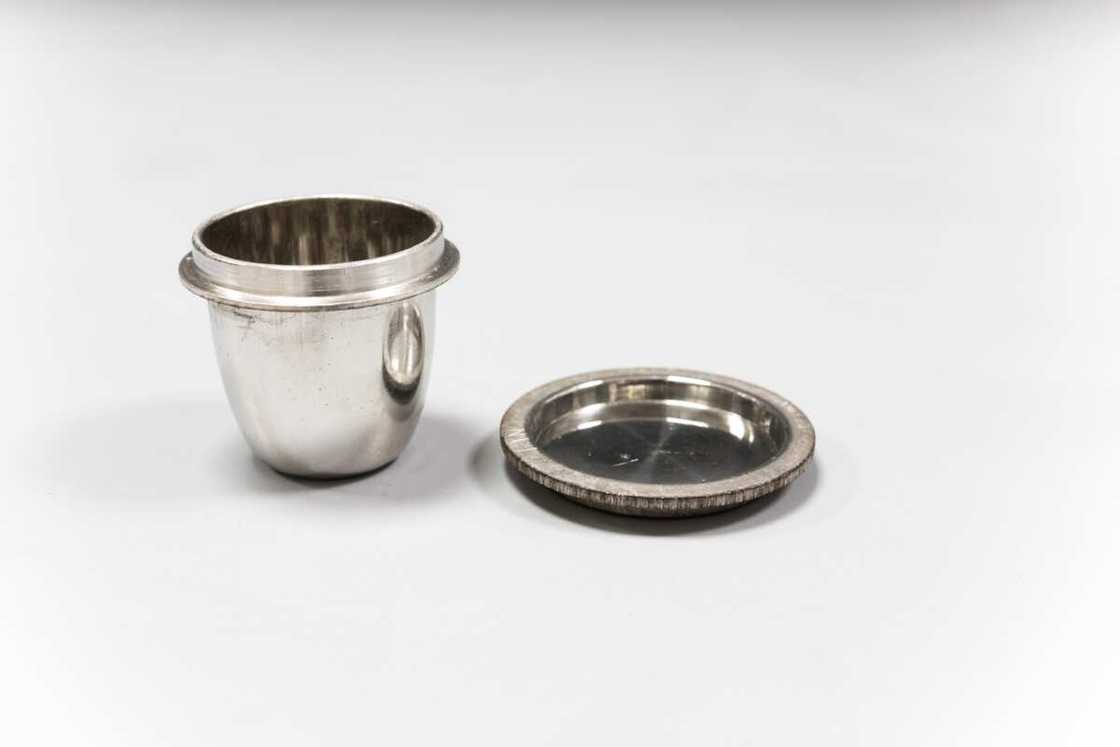
Source: Getty Images
This apparatus is a small receptacle usually made using porcelain. Not all laboratory glassware is appropriate for heating as some can get damaged or break.
However, a crucible is heat-resistant and ideal for containing compounds when heated to high temperatures. In addition, it has a lid that is meant to contain particles of smoke.
5. Volumetric flasks
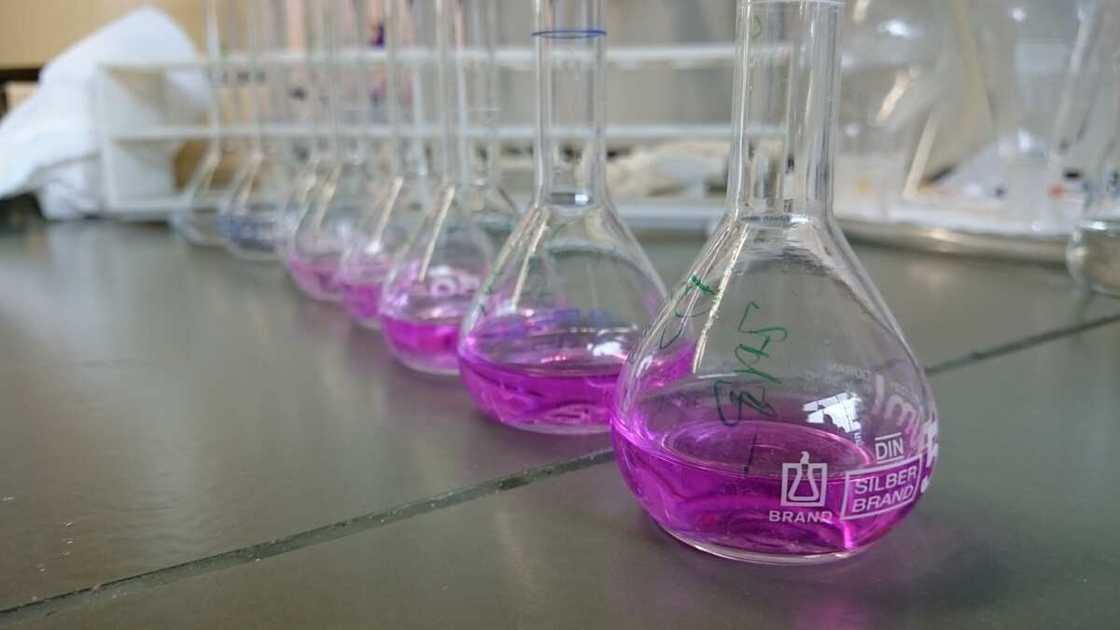
Source: UGC
Volumetric flask tops among the most common laboratory equipment list. It is a type of glassware calibrated to hold exact volumes of a liquid at a precise temperature. In chemistry, a volumetric flask is used to prepare standard solutions and for accurate dilutions.
There are different sizes of this flask, and the volume is usually indicated. Depending on what amount of solution you want to prepare, you can use a 50ml, 125ml, 250ml, 500ml, or 1000ml volumetric flask.
6. Beakers
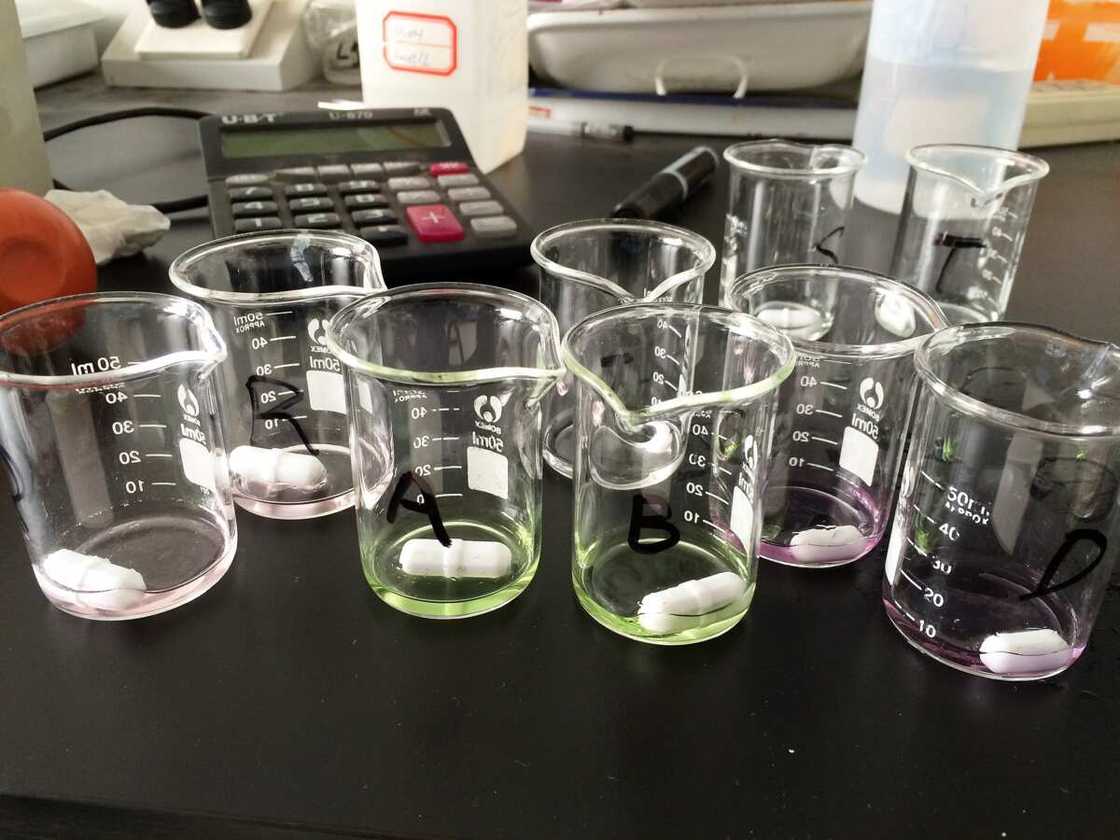
Source: UGC
Just like test tubes, beakers are used to store, heat, or mix substances. Beakers are cylindrical with a flat base, have a spout, and do not have rounded bottoms. They also come in a variety of sizes.
7. Bunsen burner
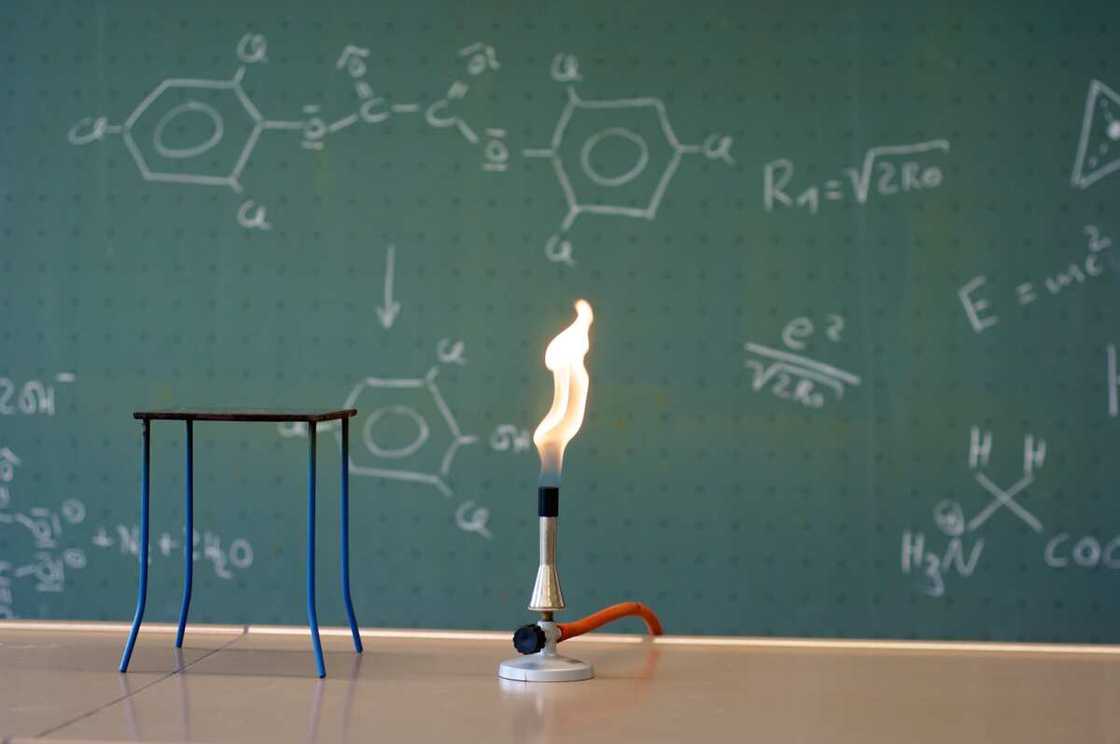
Source: Getty Images
It is used for sterilizing objects and heating. The gas used in a bunsen burner could be natural gas or liquified petroleum gas like methane.
8. Spatula
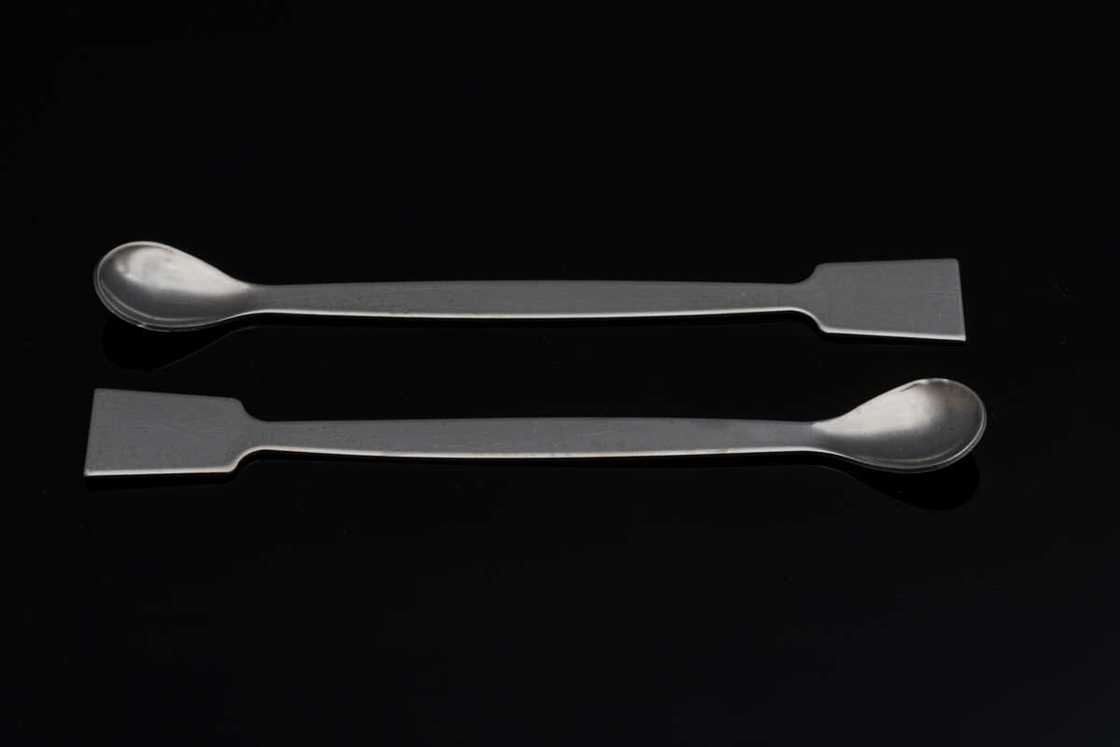
Source: Getty Images
This type of scientific equipment resembles the kitchen spatula, just that it is much smaller. Spatulas are small hand-held tools used to scoop and transfer solids. They can also be used to apply paste-like treatments.
Most spatulas are resistant to acids and heat, making them suitable for use with a range of substances.
9. Magnifying glass
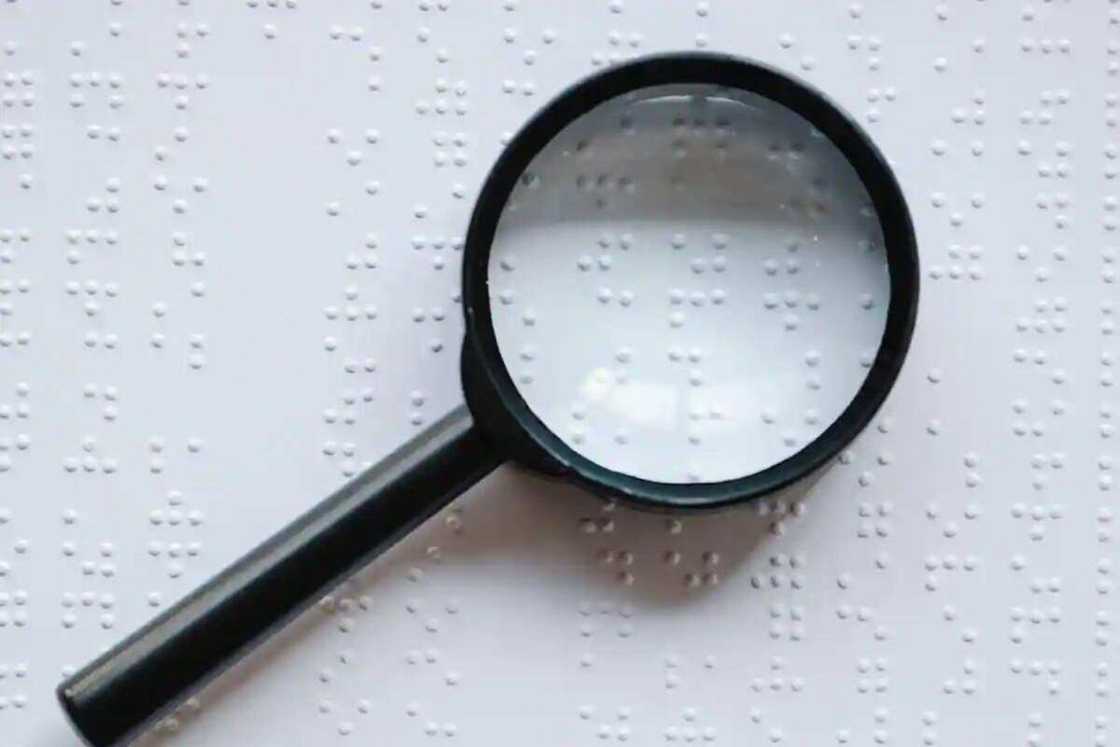
Source: UGC
This common laboratory apparatus produces a magnified image of an object. Magnifying glass basically a convex lens in a frame with a handle.
10. Spring balance
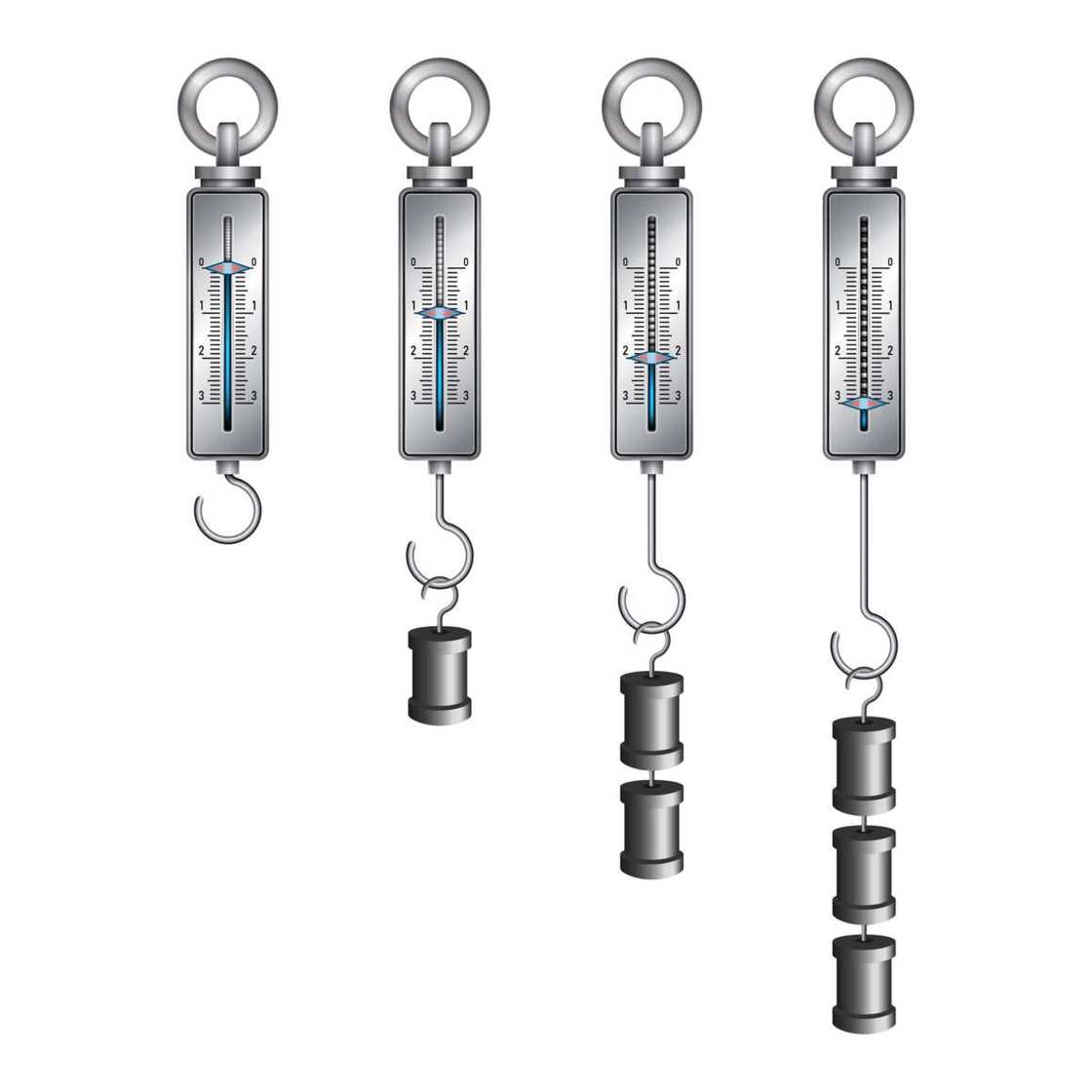
Source: UGC
It is also referred to as a Newton meter. The spring balance is used to measure the weight of an object by the tension of a spring. It consists of a spring on one side and a hook on the other.
It works by the principle of Hooke's law, which states that the force applied to an elastic object is directly proportional to the extension, provided the elastic limit is not reached. This force gauge only measures weight and not mass.
11. Dropper
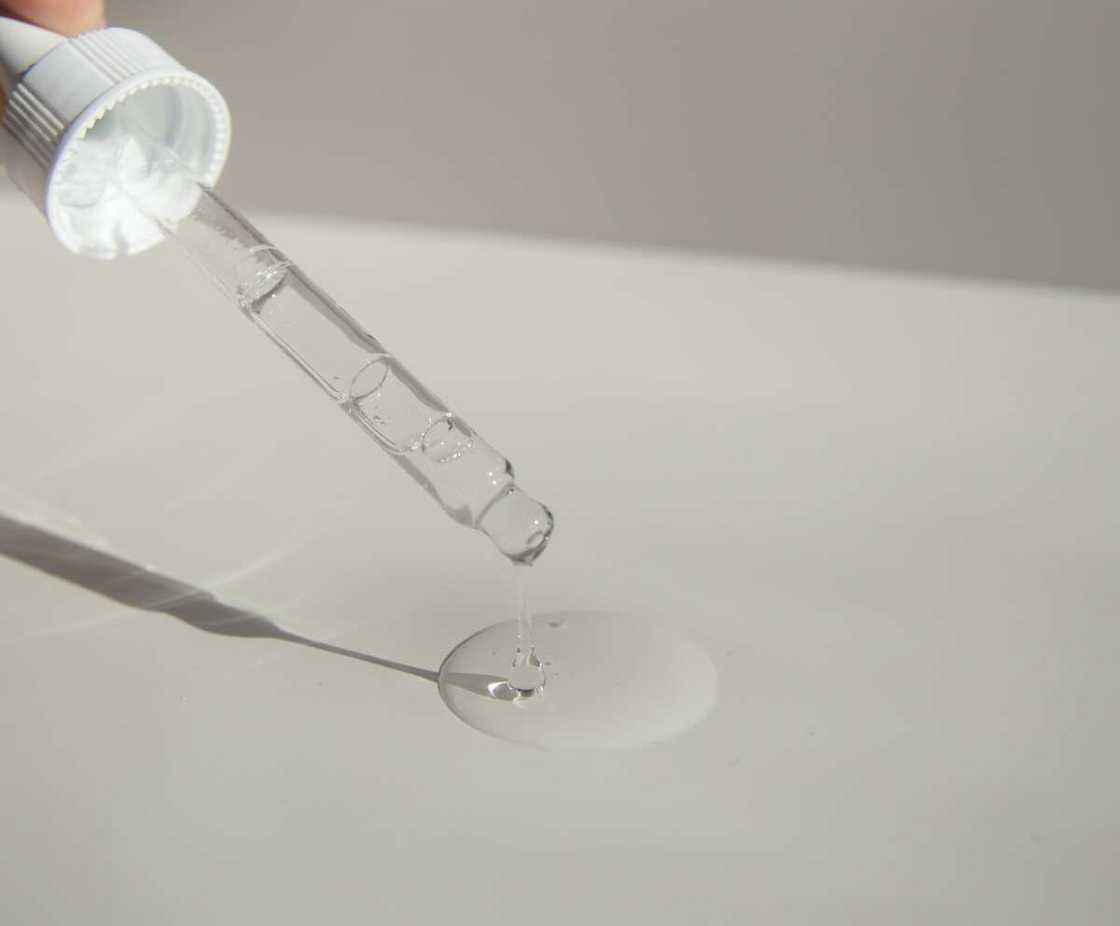
Source: UGC
A dropper, also called a Pasteur pipette, is a short glass or plastic pipe with rubber on one side. It is used to deliver small amounts of liquids, a single drop at a time.
12. Measuring cylinder
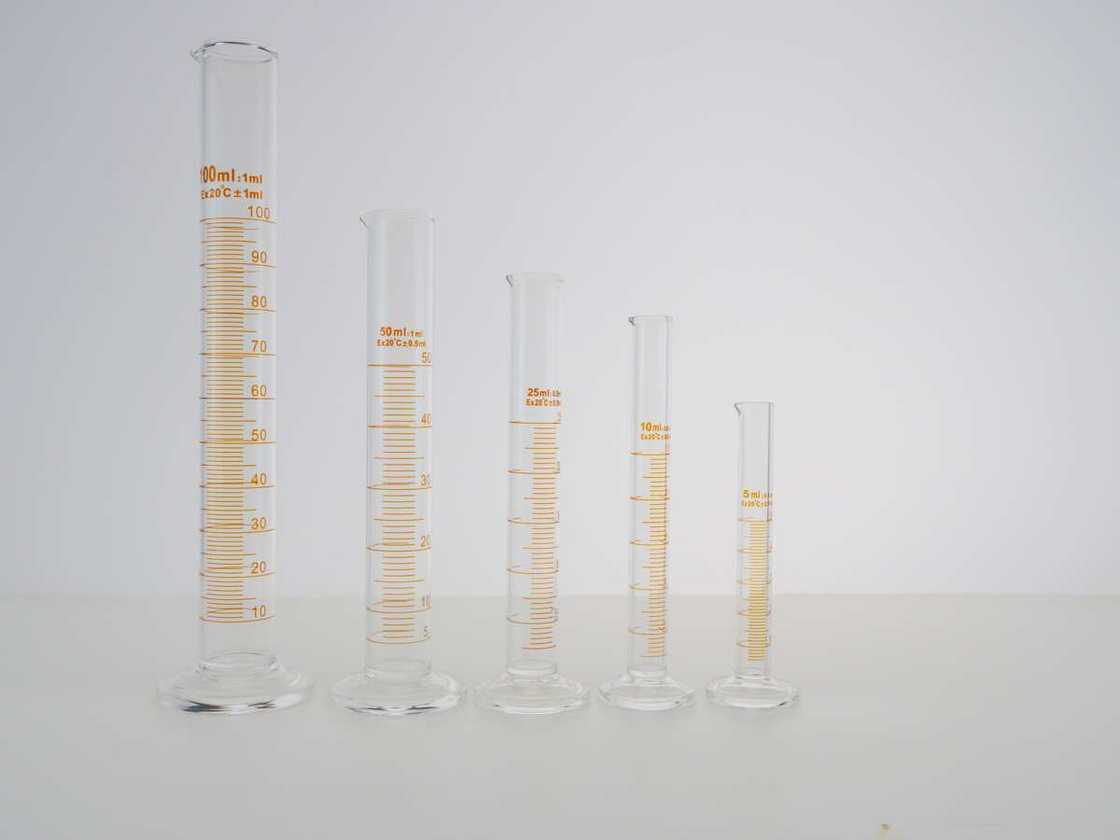
Source: UGC
This common type of laboratory apparatus is used to measure the volume of a liquid. It is graduated, and every marking shows the amount of a reagent. The measuring cylinder is cylindrical and is also narrow.
13. Thermometer
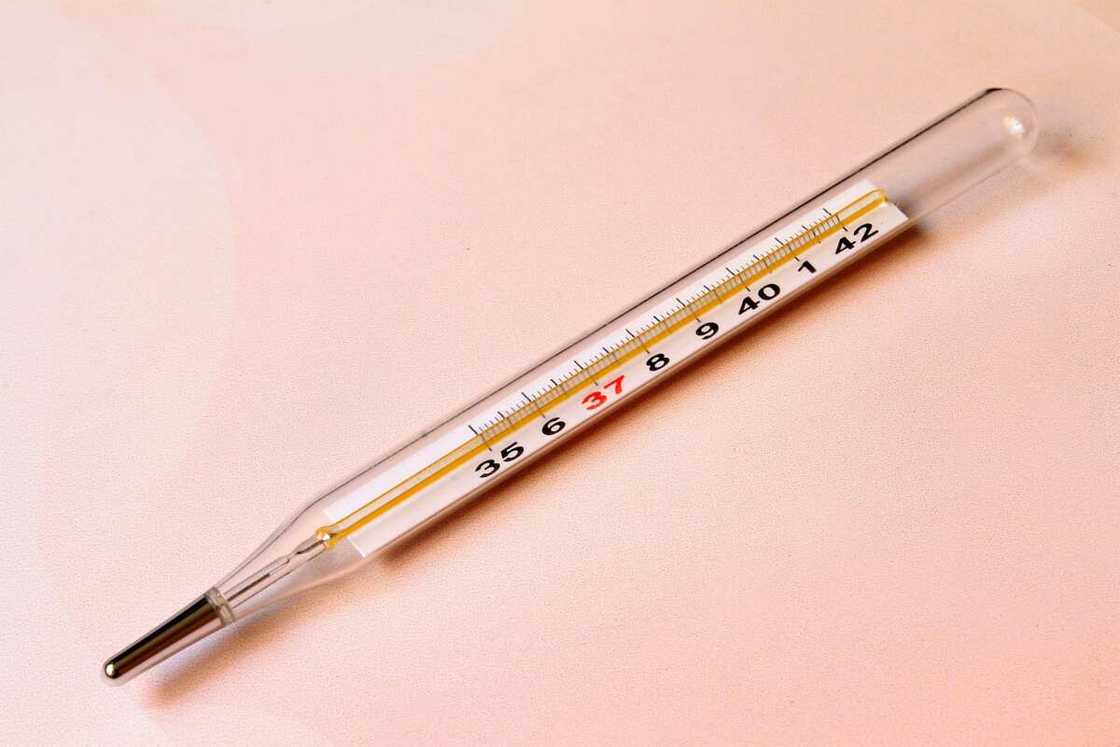
Source: UGC
We all have come across thermometers as we frequently use them at home. Thermometers used in laboratories are almost similar as they also measure the temperature of substances (not body temperature) and have a high degree of precision.
14. Burette
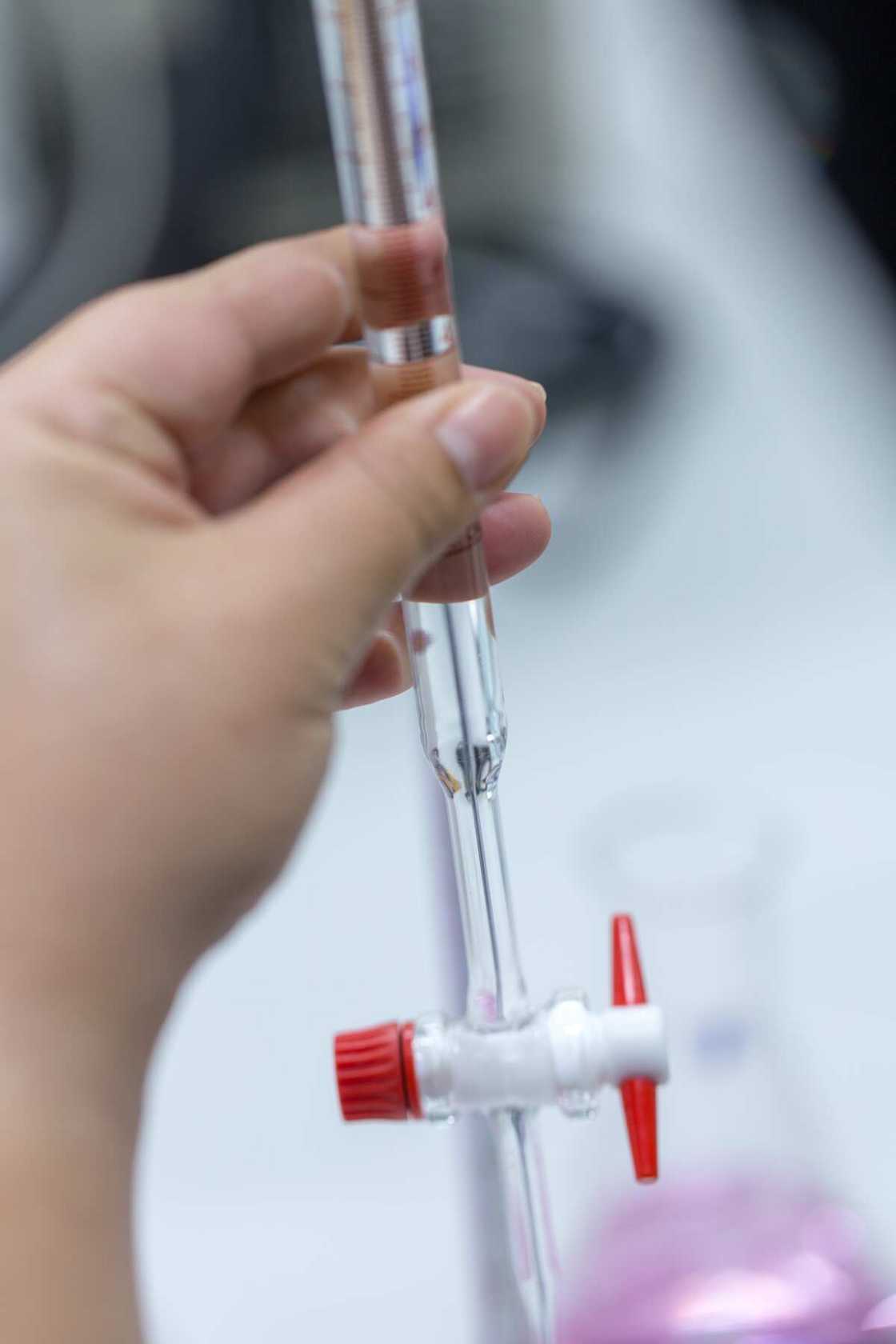
Source: Getty Images
This simple piece of chemistry laboratory apparatus is used to deliver known volumes of a substance. It is often used during titrations. It is a long graduated tube with a stopcock on at the lower end. The most popular burettes are the 50ml, 25 ml, and 10ml varieties.
15. Balance
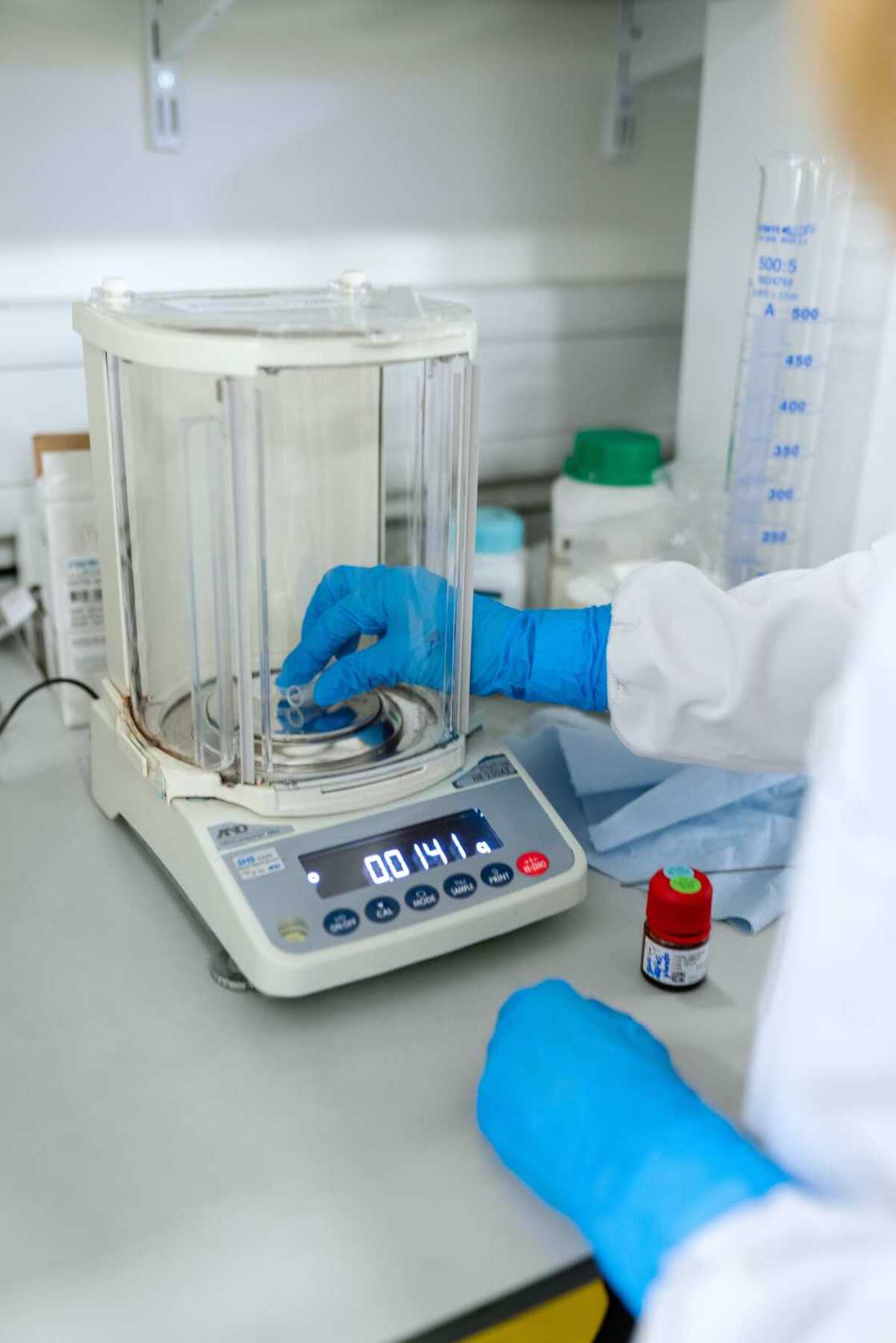
Source: UGC
Solids are often weighed before use, as some experiments require exact amounts of substances. A balance is used to weigh objects. Analytical and toploading balances are the most commonly used types.
16. Funnels
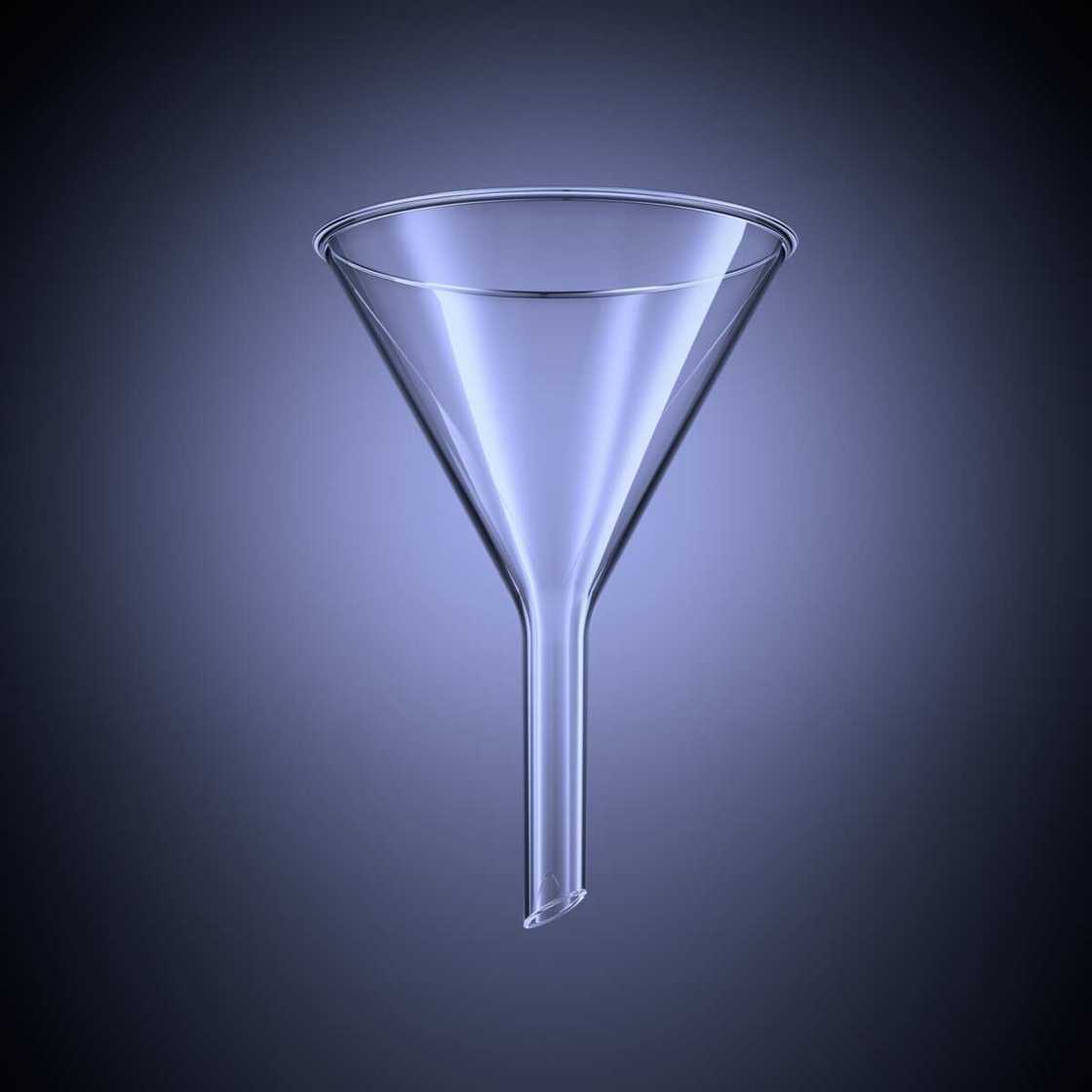
Source: Getty Images
Funnels are yet another essential kind of apparatus. They are used to deliver substances into vessels with small openings. There are several types, each with a different function, such as filter, thistle, and dropping funnels. Büchner and Hirsch's funnels are good examples of organic chemistry laboratory apparatus.
17. Wash bottle
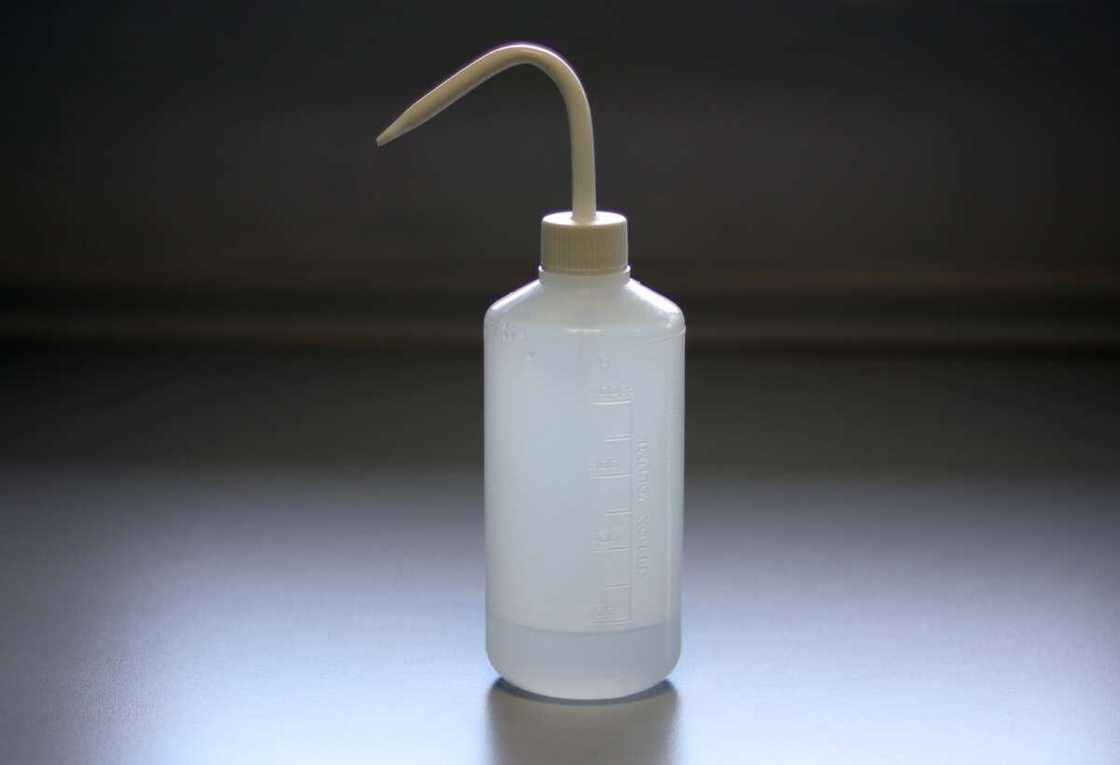
Source: Getty Images
A wash bottle is a squeeze container with an extended nozzle. It is used to rinse glassware and for sterilization. Wash bottles are mostly made out of polyethene. Depending on the task you wish to perform, you can fill it with another solvent, for example, ethanol or deionized water.
18. Tongs
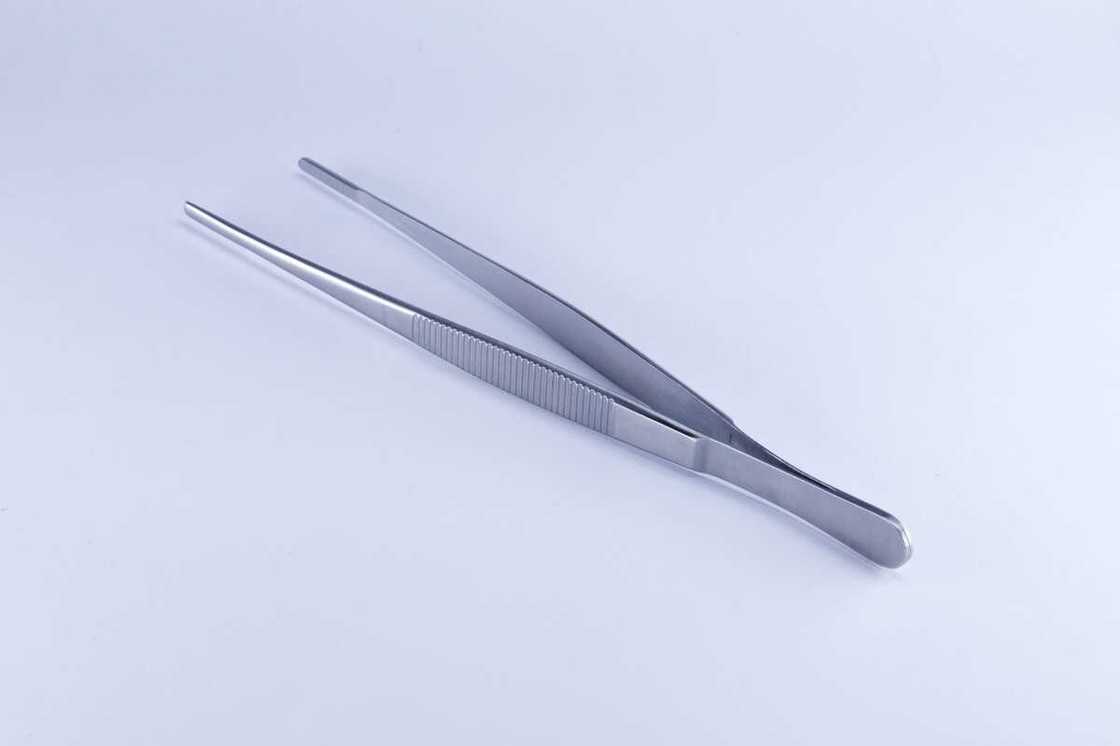
Source: UGC
When working in a laboratory, you often have to deal with chemicals, heat, and other hazardous substances. Tongs are used to grasp harmful objects and also hold hot vessels. Each type of tong is designed for a particular use. Typical examples are beakers, utility, and crucible tongs.
19. Ammeter
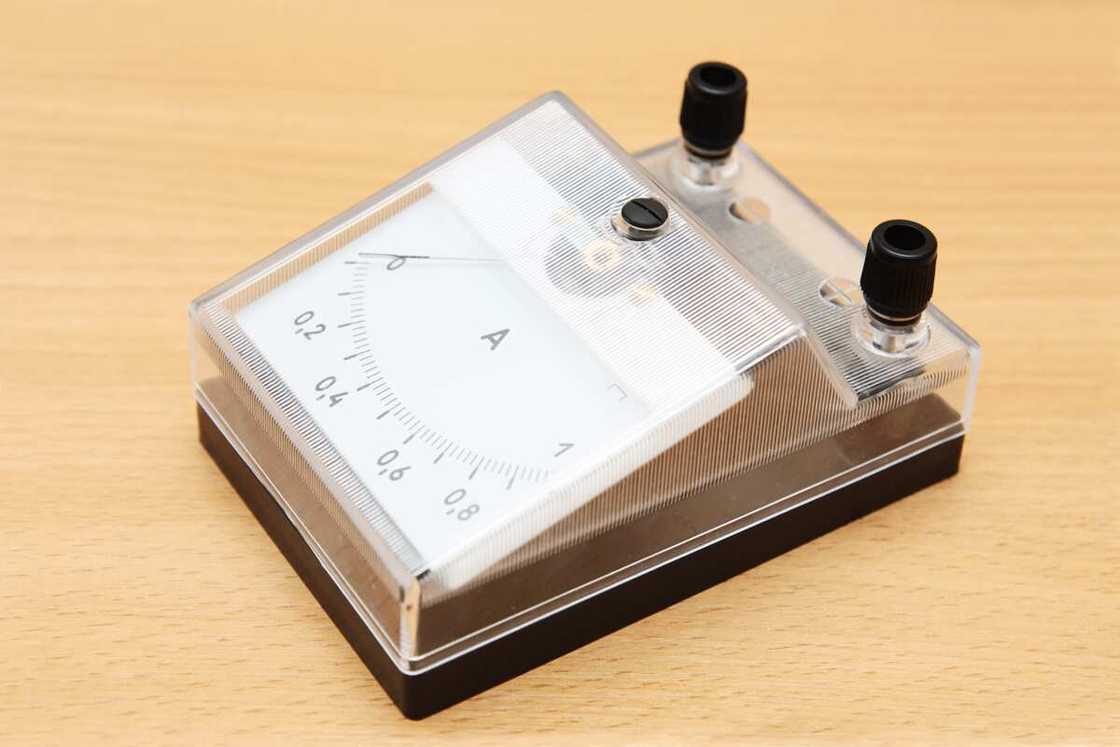
Source: Getty Images
You will not miss this equipment in any physics lab. An ammeter is used to measure the amount of current in a circuit. The SI unit of current is Amperes (A).
20. Brushes for test tubes
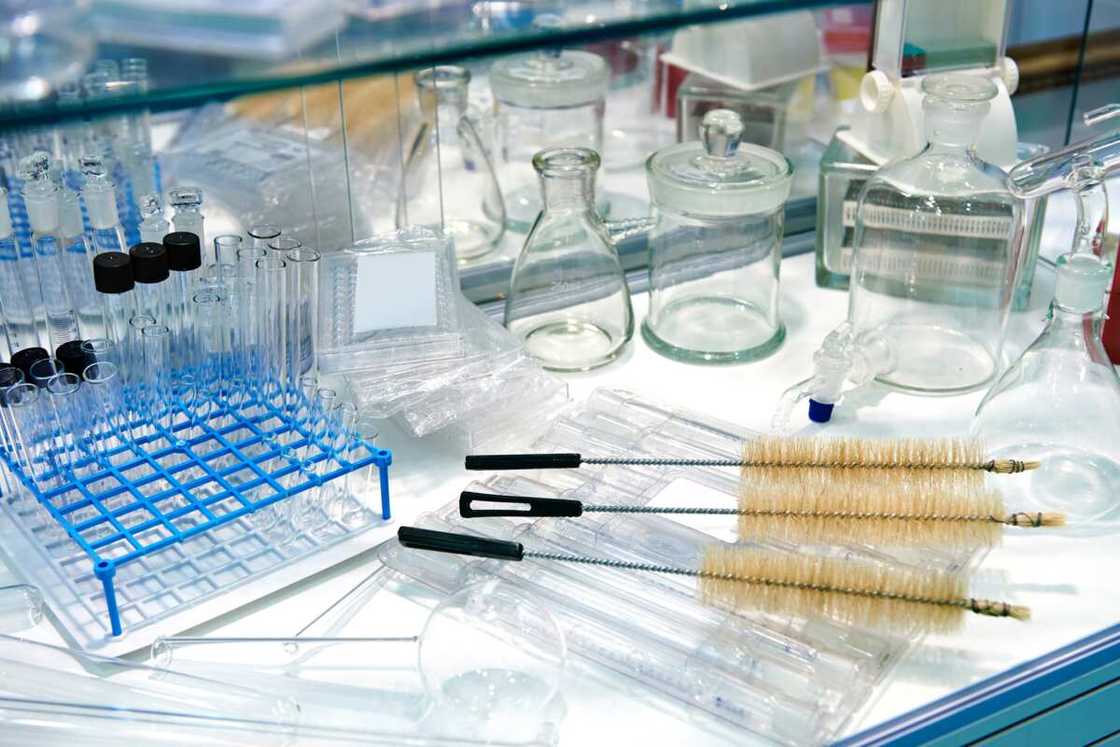
Source: Getty Images
Our laboratory apparatus list cannot be complete without mentioning a tool used for cleaning. Test tube brushes are used to clean containers such as flasks, beakers, and test tubes. After use, an apparatus should always be cleaned and safely put away.
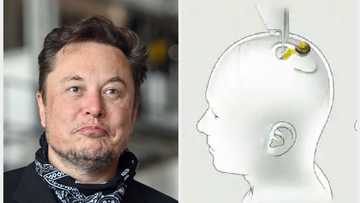
Read also
Elon Musk's Neuralink gets govt approval to implant microchips in human brains, releases video
21. Litmus and filter papers
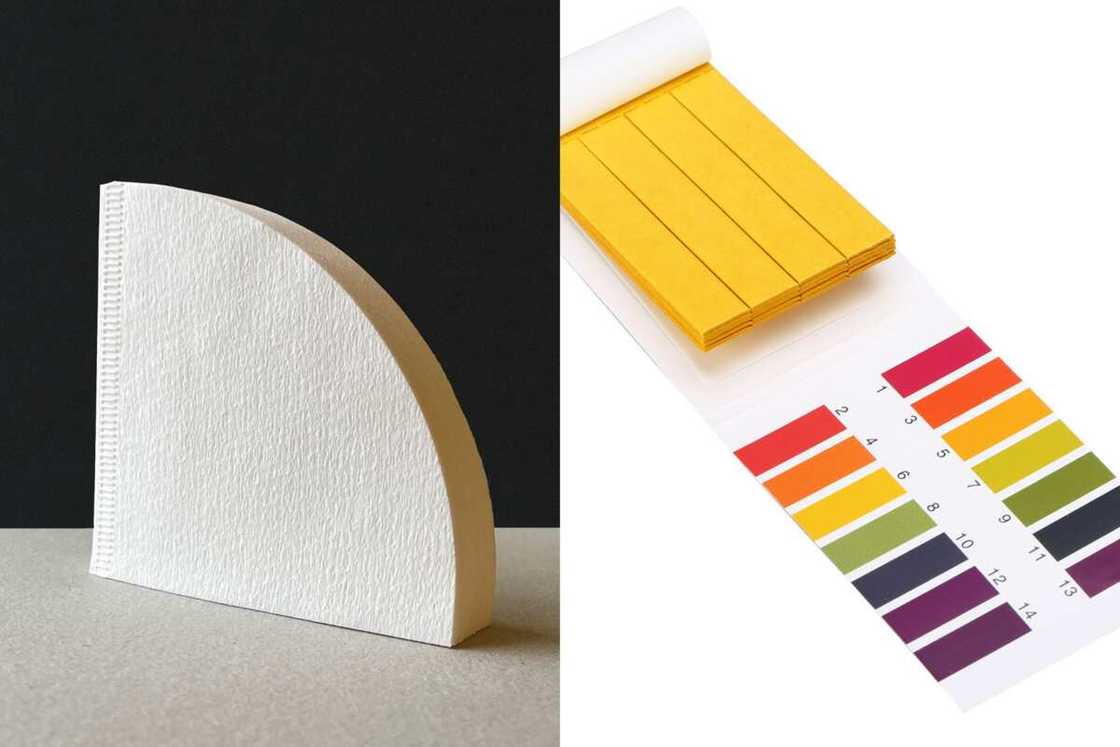
Source: UGC
Although litmus and filter papers are not mostly classified under laboratory apparatus, they are also vital in any chemical reaction.
For instance, litmus paper is used to identify the pH value of a chemical solution by changing its colour. Filter paper, on the other hand, is used in the filtration process to filter large particles or separate liquids.
22. Safety goggles
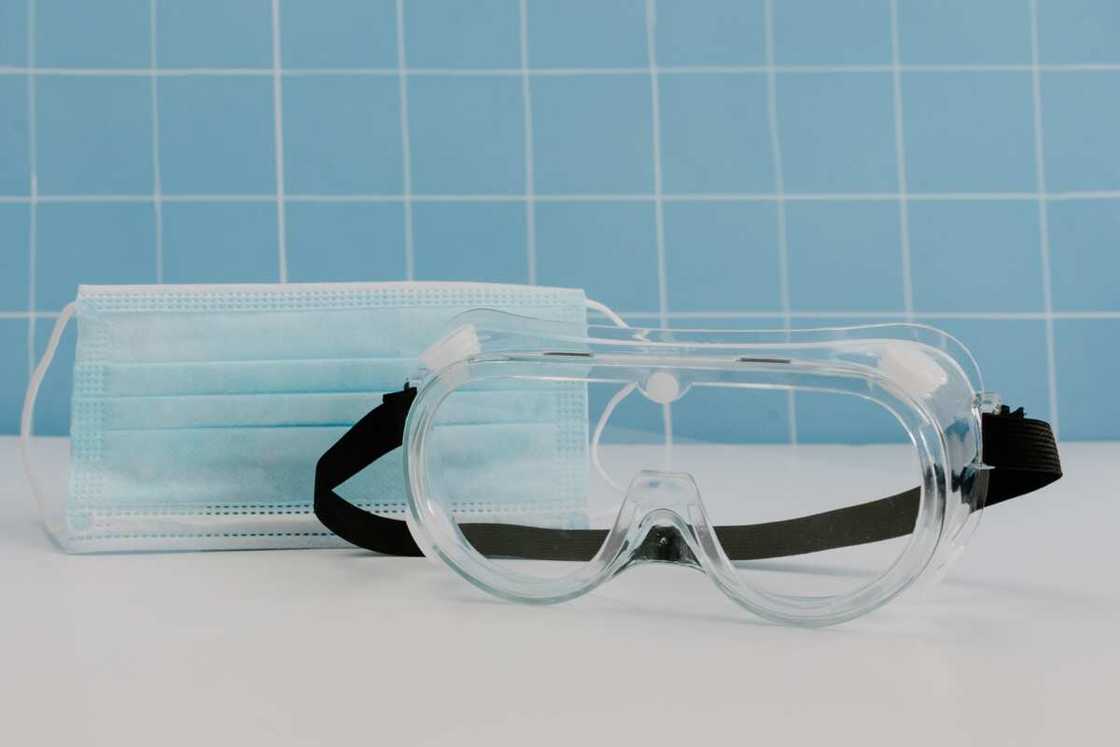
Source: UGC
Safety is the first rule of any laboratory operation. While most overlook the importance of safety goggles, these apparatuses protect the eyes from irritation caused by fumes or dangerous liquids. Remember, a small splash of acid to the eyes can cause blindness; hence, it is vital to always have safety goggles on.
23. Pipettes
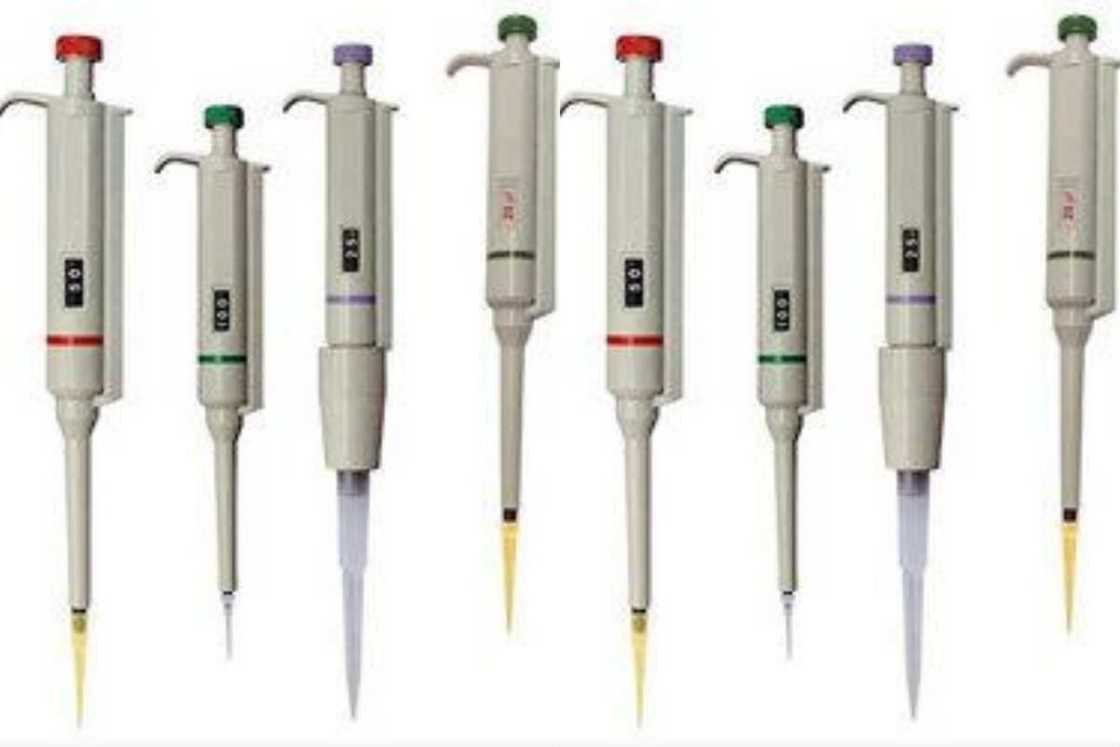
Source: UGC
Laboratory pipettes are available in different varieties, defined by their sizes. Each variety is designed for a specific purpose. However, the general function of these narrow glass tubes with rubber ends is to measure an exact volume of liquid before transferring it to another container.
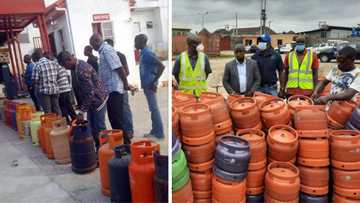
Read also
“Ticking time bomb”: Experts warn against use of expired, refurbished and substandard gas cylinders
24. Lab stand and clamps
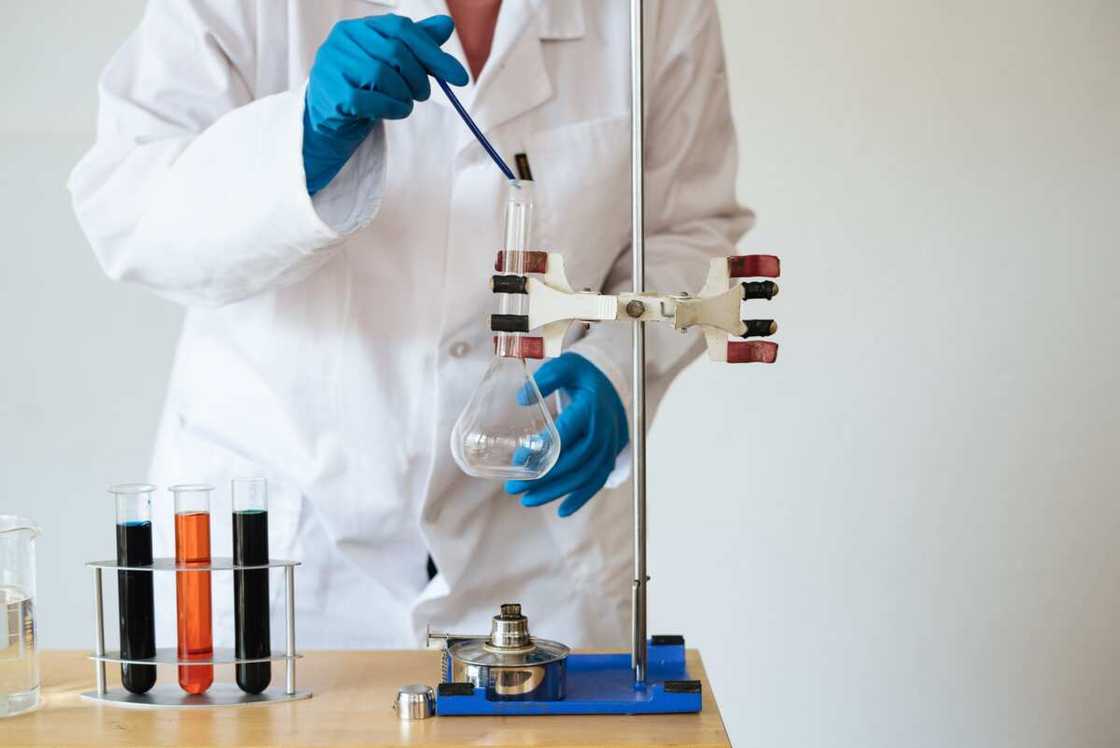
Source: UGC
Lab stand and clamps always go in hand to hold other laboratory apparatus. For example, they are used to suspend beakers, distillation columns, burets, or volumetric flasks above a heat source or other containers. In some cases, stands are used independently to hold beakers or crucibles. However, a wire mesh is needed to distribute the heat evenly and support the beaker.
25. Florence flasks
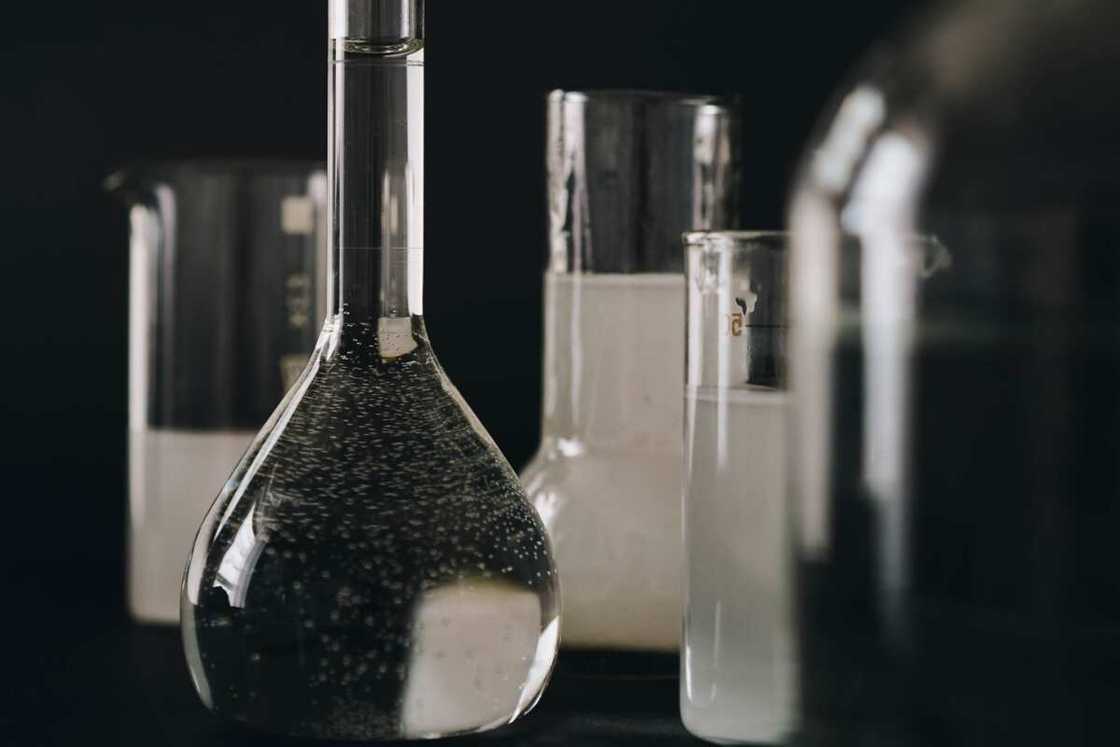
Source: UGC
Florence flasks, also known as boiling flasks, have long necks and round bottoms. They are used to hold liquids above a heating source. They can also be easily swirled and capped using glass or rubber stoppers. However, when using them to boil liquids, it is advisable to keep them open since the pressure build-up inside can cause them to explode.
What are some of the categories of laboratory equipment?
Lab apparatus are categorized into various classes depending on their uses. Below are all the categories of lab equipment and their names
- Analytical instruments: These are instruments mostly used in research labs. Most of these apparatus are used in the analysis of various matters and compounds. Examples of such instruments are Atomic Absorption Spectroscopy (AAS), High-Performance Liquid Chromatography (HPLC), balances, calorimeters, colourimeters, conductivity meters, and many more.
- Laboratory glassware: These are laboratory materials for measuring, pipetting, transferring, preparation of reagents, and storage. They include beakers, bottles, condensers/distillation, flasks, funnels, glass washers/dryers, test tubes, and vials.
- Clinical lab equipment: These are apparatus mostly used in clinical areas, mostly in hospitals. They include blood/gas analyzers, cell counters, chemistry analyzers, coagulation analyzers, and haematology analyzers.
- Microscopes: They are instruments that are used to magnify small objects. They are categorized into five types, stereo microscope, compound microscope, inverted microscope, metallurgical microscope, and polarizing microscope.
- Histology/pathology equipment: These are tools that help to prepare and examine tissues. They are cover slippers, cryostat, embedding stations, slide stainers, and tissue processors.
- Laboratory supplies: They include apparel, gloves, lab coats, chemicals, cuvettes, filtration supplies, labels, lamps, and plasticware.
- Biotech/life science: Include processes like osmometers, capillary electrophoresis, DNA synthesizers, electrophoresis, electrophysiology, and electroporation.
- General lab equipment: They include, Baths/circulators, block digesters, centrifuge, cryogenics, desiccators, Environmental Growth Chambers, flowmeters, freezers, fume hoods, and furnaces.
- High-Performance Liquid Chromatography (HPLC): The instrument detects very small amounts of solvents and separates a wide variety of chemical mixtures. Its parts include a pump, an injector, a column, a detector, and a computer analyzer.
- Gas Chromatography (GC): This is an instrument used to measure the mole of substances in a liquid sample or parts per billion concentration in a gaseous sample. Its parts include the gas section, sample injector, column, and detector.
- Microplate equipment: This is a laboratory instrument used to measure chemical, biological or physical reactions, properties, and analytes within the well of a microplate. A microplate consists of small wells in which separated reactions take place.
- Antibodies/reagents: These are like cell culture media, cytokines, enzymes, and biochemicals.
- Vacuum equipment: They are majorly used in the manufacturing of cathodes, pumping water, welding, food preservation, applied sterilization, and many more. Some of the instrument's parts are valves, gauges, pumps, and filters.
- Laboratory pumps: There are two main types of laboratory pumps, entrapment and displacement pumps.
- Fume hoods and lab enclosures: They are designed to prevent contamination in the lab by fumes or gases from chemical reactions
- Centrifuges: This is a laboratory device used to separate fluids, gas or liquid, based on density. Separation is achieved by spinning a vessel containing material at high speed; the centrifugal force pushes heavier materials to the outside of the vessel.
- Chromatography: It's a technique used to d separate and identify the components of a mixture. HPLC and GC all use chromatography techniques.
- Spectroscopy: This is the study of the interaction of light with matter. Instruments used are AAS, molecular spectroscopy, infrared spectroscopy, ultraviolet spectroscopy, and X-Ray analytical (XRD, XRF).
- Imaging systems: They aid in producing an image of objects by light on a sensitive surface like films.
- Labelling: It helps in the identification of different apparatus and specimens in the laboratory.
What lab equipment is used to measure mass?
A balance or scale is an instrument used to measure mass in the science laboratory. Types of balances are triple beam balance or electronic balance.
What lab equipment is used to measure volume?
Various types of equipment can be used to measure the volumes of different liquids. Such equipment is Erlenmeyer flasks, Florence flasks, graduated cylinders, beakers, volumetric flasks, burettes and pipettes.
The above are some of the most common laboratory equipment. It's important to understand their uses to avoid using apparatus for the purpose they are not supposed to be used for.
Legit.ng recently published an article with 20 adult tea party ideas. A tea party is appropriate for a variety of occasions. It usually consists of small, delicate-looking portions of delectable sweet and savoury treats.
A tea party is an excellent option for celebrating a birthday or simply gathering friends around the table without cooking an entire meal. Discover some adult tea party ideas to spice up your next get-together.
Source: Legit.ng

Mercy Mbuthia (Lifestyle writer) Mercy Mbuthia is a content writer with five years of experience writing on various topics, including biographies, entertainment, and lifestyle. She joined the Legit team in 2019. Mercy earned a Master of Science (Food, Nutrition & Dietetics) from Dedan Kimathi University in 2022. Her articles have appeared on several media sites such as The Health Channel, The Nation, Tekrati, ValiantCEO and Celebrity Leader. In 2023, Mercy finished the AFP course on Digital Investigation Techniques. Email: mercymmbuthia18@gmail.com

Jackline Wangare (Lifestyle writer) Jackline Simwa is a content writer at Legit.ng, where she has worked since mid-2021. She tackles diverse topics, including finance, entertainment, sports, and lifestyle. Previously, she worked at The Campanile by Kenyatta University. She has more than five years in writing. Jackline graduated with a Bachelor’s degree in Economics (2019) and a Diploma in Marketing (2015) from Kenyatta University. In 2023, Jackline finished the AFP course on Digital Investigation Techniques and Google News Initiative course in 2024. Email: simwajackie2022@gmail.com.


